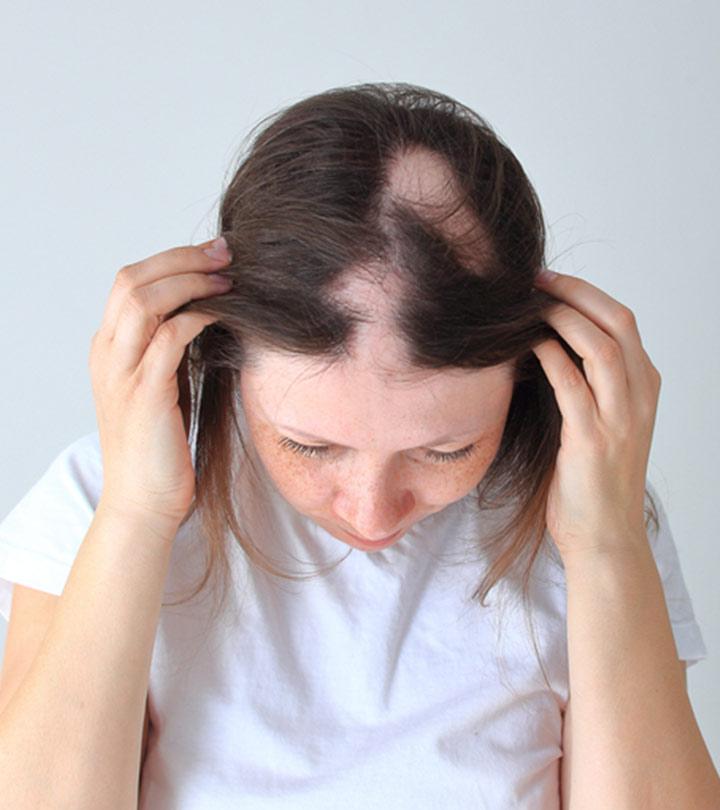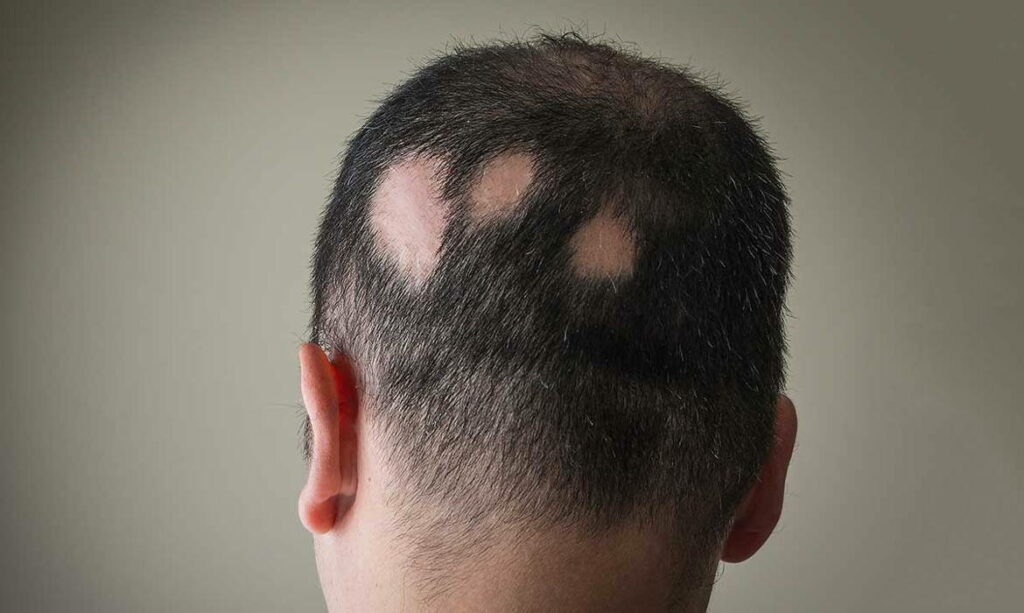Alopecia areata is a disease that consists of hair loss in a specific area of the body. In most cases, it appears in small circular areas of the head and beard.
One of the curious things about alopecia areata is that the skin areas that are affected and have no hair appear absolutely normal, with no skin changes, swelling or redness. It affects both men and women, although there seems to be a more significant number of men cases. It can appear in the first months of life; however, the highest volume of cases occurs between 10 and 25 years of age.
Causes of Alopecia Areata
Several factors influence its appearance. Alopecia areata is a multifactorial disease since different factors intervene in its appearance, such as:
– Stress
– Infections
– Exposure to toxins
– Anxiety crises
– Nutritional imbalance
– Having celiac disease
– Genetic predisposition
– Having diabetes mellitus type 1
– Autoimmune factors such as the accumulation of CD4+ and CD8+ T lymphocytes, responsible for part of the cellular immunity functions, especially CD8+, which neutralize infected cells, around the hair follicle. This results in disruption of hair growth and subsequently hair loss.
Other causes of autoimmune origin such as: rheumatoid arthritis, vitiligo, Addison’s disease, systemic lupus erythematosus, myasthenia gravis, scleroderma, allergic rhinitis, atopic dermatitis, asthma and psoriasis.
The evolution of alopecia areata is challenging to guess. Its effects may be temporary or remain for many years.
Symptoms of Alopecia Areata

The main symptom of alopecia areata is non-scarring hair loss in round circles, especially on the head. The areas where the hair disappears show the skin of the scalp. Only two or three circles of hair fall out in some mild cases, and then the disease does not reappear. In any case, it is impossible to know how it will progress. In severe cases, hair may fall out in all areas of the body.
Types of Alopecia Areata
Your dermatologist may mention the type of alopecia areata you have when discussing treatment.
The main types of Alopecia include:
Alopecia areata: Alopecia is the clinical term for baldness. The word Areata means “spotted”. This bald spot can appear anywhere on the body, including on the scalp, eyelashes, eyebrows, beard area, underarms, inside the nose or ears.
Alopecia totalis: The patient will lose all hair on the scalp, leaving the scalp entirely bald.
Alopecia universalis: This form is very rare. It causes the person to lose all of their hair, leaving the entire body hairless.
Diagnosis of Alopecia Areata
Visual and laboratory examination: the physician makes the diagnosis based on the physical examination, which will include examination of the nails, and on questions asked by the patient. During the examination, the physician will gently tug on several strands of hair to determine how weak the hair root may be. A sample of the hair is then analyzed under a microscope. A blood test is also usually ordered to study the functioning of the thyroid gland.
Alopecia Areata Treatment and Medication
A totally effective treatment has not yet been achieved; in fact, it is common for alopecia areata to correct itself. However, a combination of several measures can stop hair loss and even regrow hair. Generally, the patient must take anti-inflammatory drugs to affect the autoimmune system. Corticosteroid prescriptions and triamcinolone microinjections are common.
Prevention of Alopecia Areata
There are no specific measures to prevent the disease and Alopecia areata cannot be prevented. As the main cause of this disease has not been found, no antidote has been found either. However, it is recommended to lead a healthy lifestyle with stress control, applying relaxation techniques; a balanced diet rich in trace elements and vitamins; and a moderate and regular exercise plan.


